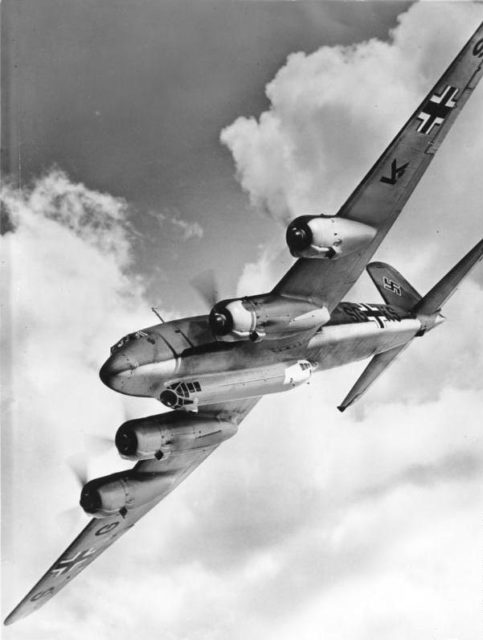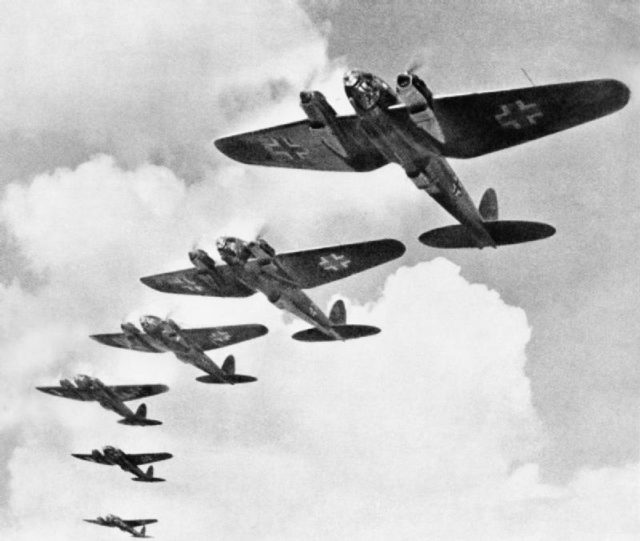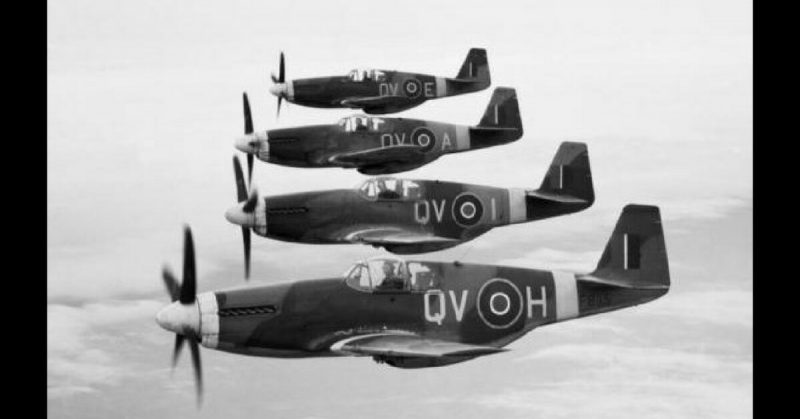One of the most crucial conflicts of the Second World War was between the air forces of Britain and Germany. The Royal Air Force (RAF) and Luftwaffe adapted to this in different ways.
The Importance of the Air War
Air power first became a significant part of warfare during WWI, but it was in WWII that it came to the forefront. Long range bombing allowed nations to attack each other’s industrial bases. Fast attack fighters let them fight back. Air power was used to support ground offensives and challenge enemy power at sea.
Following the fall of France, the war in the west was largely between Britain and Germany, and air power was central.
The armies of the two nations were facing each other on the ground in North Africa. The Germans had support from the Italians, and the British were aided by imperial forces and ex-imperial Allies. The North African war did not directly threaten Britain or Germany. The air war did. This made it crucial both in strategy and for morale.
Different States of Readiness
In air power, as in so much else, the two nations entered the war with very different preparations.
Germany had been gearing up for war for years. Adolf Hitler’s expansionist and militaristic ideology had led to substantial investment in all branches of the military. The result was an air force that was ready for war.
Not only had the Luftwaffe benefited from military investment in the 1930s, but some of their pilots had gained live combat experience. The Spanish Civil War of 1936-9 had seen the Germans and Italians provide air support for Franco’s right-wing coup. It included the bombing of Republican strongholds.
The RAF, on the other hand, lacked both experience and equipment. Bomber Command did not have enough planes to fulfill its strategic goal of demolishing German industry. Many of their planes were two-engine bombers, rather than the four-engine bombers which enabled heavy bombing later in the war.

Different Purposes
The RAF and the Luftwaffe initially approached the war with very different mindsets.
Successes late in the First World War had shown the Germans the value of sharp, decisive tactical strikes. Air support had played a part, with the German air force bombing and strafing Allied targets as the German infantry made breakthroughs in their spring offensive.
That experience fed into the Blitzkrieg tactics used by Hitler a generation later. The primary role of the Luftwaffe was to cooperate with the army, helping to achieve success on the ground. It was how they had been used in the swift conquest of Poland.
The RAF, on the other hand, were geared toward acting independently from the army. Bomber Command provided a long-range strike force capable of targeting the enemy at home. Fighter Command provided support for the bombers and defense for the homeland. The Trenchard doctrine, which had dominated since the previous war, stated heavy bombing alone could win a war if the RAF committed to it.
In the end, both sides used elements of both strategies. Plans to invade Britain forced the Luftwaffe to become a long-range strike force, acting independently of the army in the Battle of Britain and the Blitz.
Responses to Intelligence
These different doctrines also shaped responses to military intelligence.
RAF Bomber Command was convinced that bombing German industry could win the war, and interpreted information in that light. It reached the point of absurdity when Sir Arthur Harris, the head of Bomber Command, claimed that photographic evidence of ineffective bombing could not be trusted, based purely on his belief in his strategy. Although the RAF learned to gather and use intelligence, selective blindness to its implications existed throughout the war.
The Luftwaffe was more open to learning from intelligence. However, German intelligence gathering was less effective than that of the Allies, so they had less to work with.
Focus on Technology
Both sides recognized the value of new technology, but the technology available to them varied.
The most significant new British technology was radar. A network of listening posts across the south of England allowed them to detect incoming German air raids. It meant pilots could set out as the enemy were approaching, rather than exhausting themselves in air patrols or setting out too late.
The Germans lacked radar. For them, one of the key breakthroughs was beam-based bomb targeting, which they used early in the war. The Allies learned about it and found ways to counter it. The Luftwaffe lost what technological edge they had.

Interference from Above
One thing that the two forces experienced in different ways was interference from their political superiors. It brought little benefit to either.
In Britain, it came from Prime Minister Winston Churchill. As the Germans overwhelmed France and threatened to invade Britain, he needed to show it could retaliate.
It led to support for Bomber Command’s strategic bombing agenda, to show that something was being done. Later on, it turned into prevarication, as Churchill dithered on who to believe about whether the mass bombing was effective. His interference was enough to give Harris cover for his bloody-minded approach, but not enough to force the RAF down a more effective path.
For the Luftwaffe, the crucial intervention came during the Battle of Britain. The accidental bombing of British civilians let Churchill turn his bombers against a German city, rather than military and industrial targets. Enraged, Hitler turned the Luftwaffe to the same approach. Terror bombing replaced strategic bombing. It undermined efforts to destroy the RAF and so helped ensure British victory in the air.
Source:
Ralph Bennett (1999), Behind the Battle: Intelligence in the War with Germany 1939-1945.
Nigel Cawthorne (2004), Turning the Tide: Decisive Battles of the Second World War.
Martin Marix Evans (2002), Over the Top: Great Battles of the First World War.
